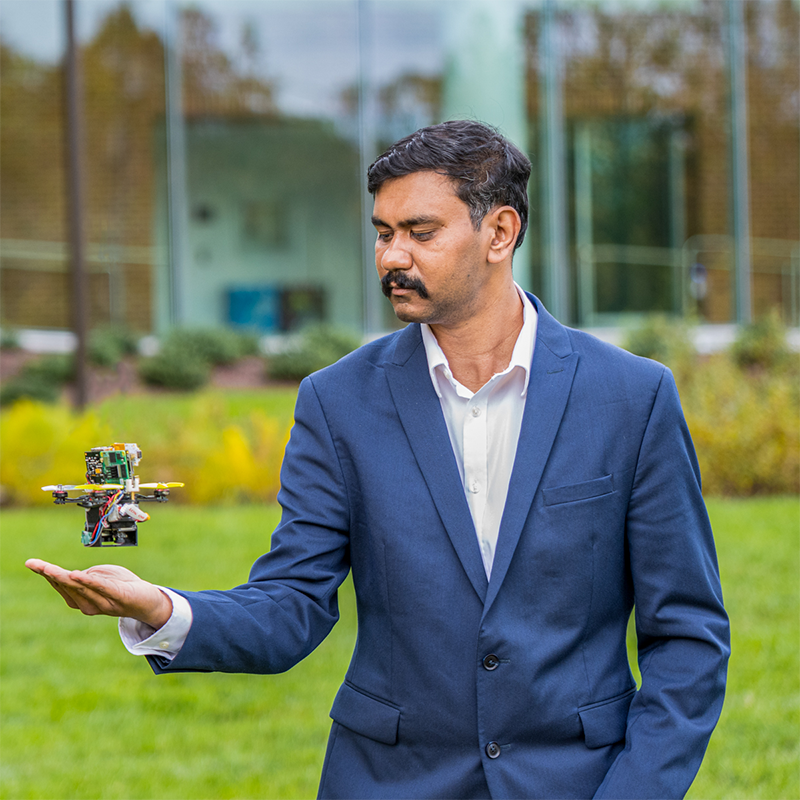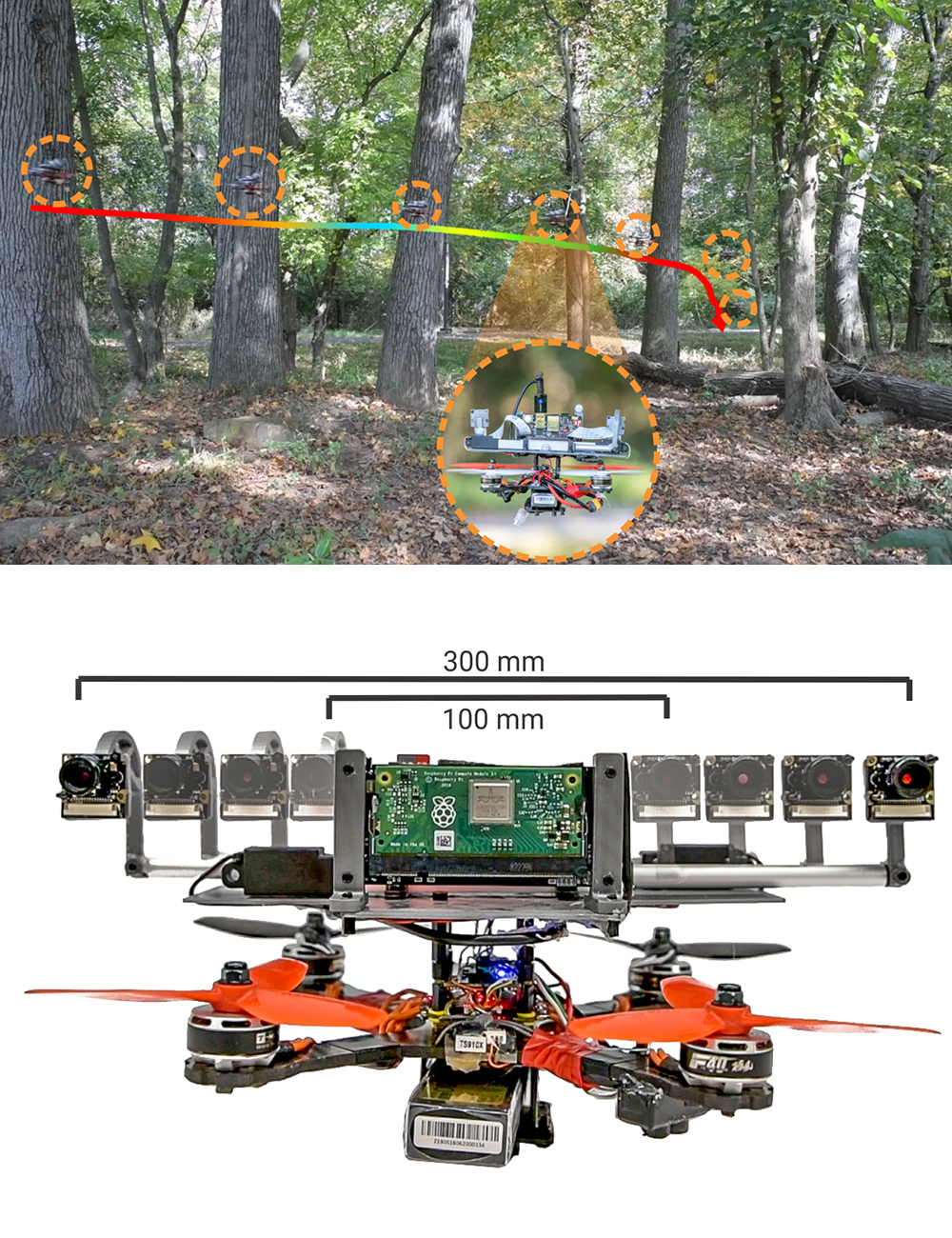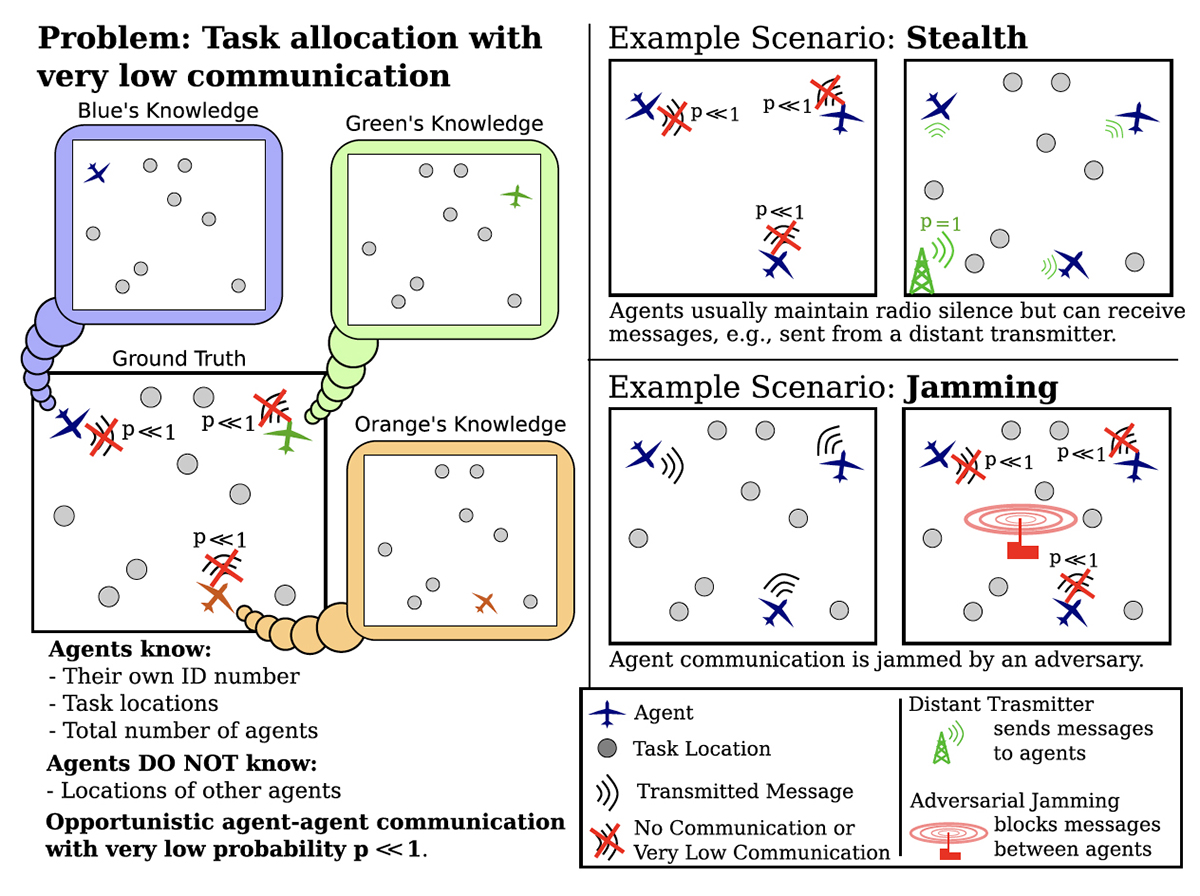News Story
The Falcon and the Flock
Who among us is not moved by the balletic aerial displays of starling flocks? We recall this memorable description from naturalist Edmund Selous’ famous book, Bird Life Glimpses (G. Allen Publishing, 1905):
“...and now, more and faster than the eye can take it in, band grows upon band, the air is heavy with the ceaseless sweep of pinions, till, glinting and gleaming, their weary wayfaring turned to swiftest arrows of triumphant flight—toil become ecstasy, prose an epic song—with rush and roar of wings, with a mighty commotion, all sweep, together, into one enormous cloud. And still they circle; now dense like a polished roof, now disseminated like the meshes of some vast all-heaven- sweeping net, now darkening, now flashing out a million rays of light, wheeling, rending, tearing, darting, crossing, and piercing one another —a madness in the sky.”
In later work, Selous speculated on what enables such dynamic morphology in flocks. A considered reading of his book, Thought Transference (or What?) in Birds (Constable & Co., 1931), suggests that he may have been on to the idea of sensory mediation amongst the birds as key to flocking. A modern view treats flocking as the result of co-evolution of predator (peregrine falcon) and prey (common starling) – to quote naturalist Grainger Hunt (2013) from his essay (A Darwinian Dance), with photographs by award-winning videographer Nick Dunlop:
“What are we to make of the pulsating, other-worldly spectacle of a massive starling flock, moving amoeba-like across the open skies? A Peregrine Falcon or other winged predator is almost always involved, as the thousands of individual flock members fight to evade capture.” He views the adaptive purpose of complex aerial displays of starling flocks to be mitigation of the risk of predation – “The wondrous cloud [of starlings] is thus secondary – an extraneous property, emerging from independent attempts by each individual, within the multitude of self-interested starlings, to escape the falcon.” He further notes the self-interest of the falcon in avoiding injury from even a grazing collision with a starling in a flock – “so the peregrine attacks the flock gingerly, and in apparent moderation of its true ability to catch [an isolated] starling”
Watch Nick Dunlop's The Starling and Falcon Dance
This work and the above photo are copyright Nick Dunlop and are used with his permission.
In this and other contexts, a phenomenon known as the confusion effect — the perceptual/cognitive challenge to a visual predator posed by the presence of numerous dynamic targets, contributes to reducing the risk to an individual prey. Understanding this effect remains elusive.
In a just-published paper, “Flocks, Games, and Cognition: A Geometric Approach,” in Systems and Control Letters, Professor P. S. Krishnaprasad (ECE/ISR) and four of his former students—Udit Halder (ECE PhD 2019), Vidya Raju (ECE PhD 2019), Matteo Mischiati (ECE PhD 2011), and Biswadip Dey (ECE PhD 2015)—have proposed a notion of cognitive cost as a possible means to explore this phenomenon.
More precisely, they argue that their notion of cognitive cost captures the high temporal variability of the modes of flock behavior and thereby assesses the impact of the confusion effect. The paper is based on analysis and modeling of data provided by the Collective Behavior in Biological Systems (COBBS) group led by Dr. Andrea Cavagna and Dr. Irene Giardina of the Institute for Complex Systems (ISC-CNR) in Rome, Italy.
Beginning with a collaboration between ISR and COBBS supported by Air Force Office of Scientific Research, work in this area in ISR has received support from Army Research Office, National Science Foundation, and Northrop Grumman Corporation. The published work presents a new integrative treatment of avian flocking behavior by bringing together computational tools, optimal control theory, evolutionary game dynamics, and geometric decompositions to shed light on the question – is there a quantitative mechanism, for ordering of flocking events that exhibit dynamic morphology, consistent with the idea that a purpose of flocking is to mitigate predation risk? Cognitive cost computed as an average Hamiltonian from an application of Pontryagin’s Maximum Principle offers an answer.
There are possible applications of insights gained in this work to a new technology of robot falconry for deterrence of bird flocks near sensitive areas such as airport flight lines – by inducing dispersal through escape behavior; other applications may include collective deterrence by exploiting behavioral complexity to mitigate threats.
Published March 8, 2023










